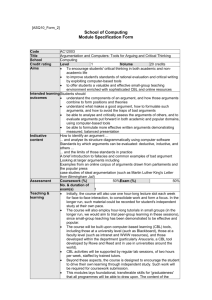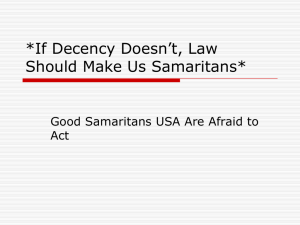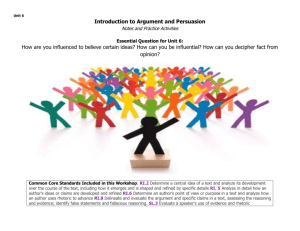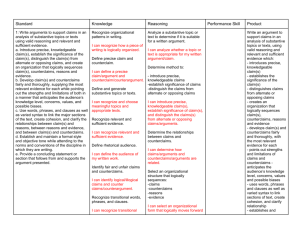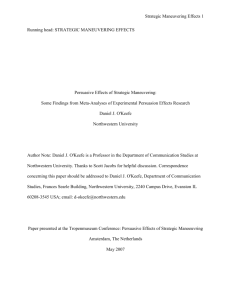Writing - Persuasive Text Rubric
advertisement
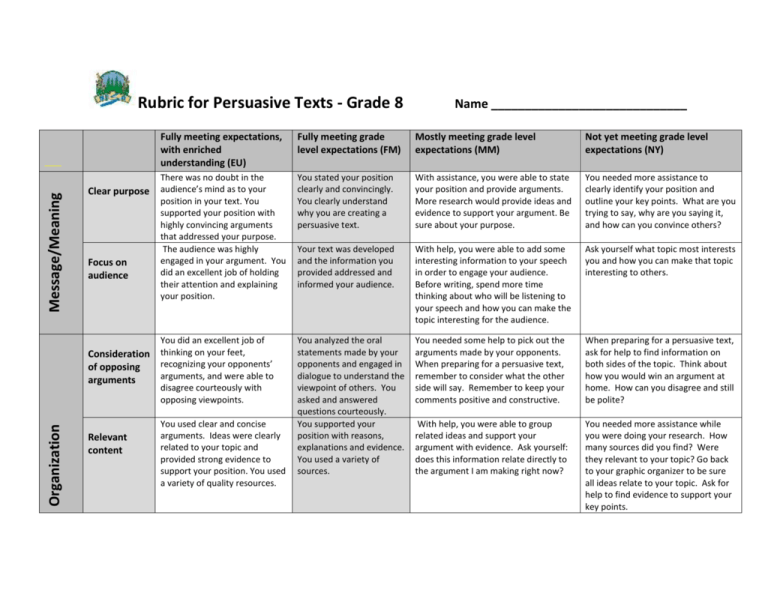
Message/Meaning Rubric for Persuasive Texts - Grade 8 Clear purpose F Focus on audience Organization Consideration of opposing arguments Relevant content Name _____________________________ Fully meeting expectations, with enriched understanding (EU) Fully meeting grade level expectations (FM) Mostly meeting grade level expectations (MM) Not yet meeting grade level expectations (NY) There was no doubt in the audience’s mind as to your position in your text. You supported your position with highly convincing arguments that addressed your purpose. The audience was highly engaged in your argument. You did an excellent job of holding their attention and explaining your position. You stated your position clearly and convincingly. You clearly understand why you are creating a persuasive text. With assistance, you were able to state your position and provide arguments. More research would provide ideas and evidence to support your argument. Be sure about your purpose. You needed more assistance to clearly identify your position and outline your key points. What are you trying to say, why are you saying it, and how can you convince others? Your text was developed and the information you provided addressed and informed your audience. With help, you were able to add some interesting information to your speech in order to engage your audience. Before writing, spend more time thinking about who will be listening to your speech and how you can make the topic interesting for the audience. Ask yourself what topic most interests you and how you can make that topic interesting to others. You did an excellent job of thinking on your feet, recognizing your opponents’ arguments, and were able to disagree courteously with opposing viewpoints. You analyzed the oral statements made by your opponents and engaged in dialogue to understand the viewpoint of others. You asked and answered questions courteously. You supported your position with reasons, explanations and evidence. You used a variety of sources. You needed some help to pick out the arguments made by your opponents. When preparing for a persuasive text, remember to consider what the other side will say. Remember to keep your comments positive and constructive. When preparing for a persuasive text, ask for help to find information on both sides of the topic. Think about how you would win an argument at home. How can you disagree and still be polite? With help, you were able to group related ideas and support your argument with evidence. Ask yourself: does this information relate directly to the argument I am making right now? You needed more assistance while you were doing your research. How many sources did you find? Were they relevant to your topic? Go back to your graphic organizer to be sure all ideas relate to your topic. Ask for help to find evidence to support your key points. You used clear and concise arguments. Ideas were clearly related to your topic and provided strong evidence to support your position. You used a variety of quality resources. Beginning, middle, conclusion Style and Language Choices Body language Language and tone Feedback: Your persuasive text was very well organized. The introduction grabbed the audience’s attention and the conclusion left them thinking. The details in the body contributed in an interesting way to your argument. You adjusted your body language and facial expressions to fit your message. You looked very comfortable during the debate and like you enjoyed “performing” for the audience. It was almost like the audience could read your thoughts by looking at your expression. Your skilled use of expressive language and tone contributed to the audience’s engagement during the debate. Your enunciation and pronunciation was appropriate and effective. You presented your arguments in a logical sequence. In the beginning you identified your position and main arguments. In the middle, you provided supporting evidence and details. In the conclusion, you generalized the comments and arguments presented. You used expressive body language and facial expressions which matched your message and helped to hold your audience’s attention You needed some assistance to organize your text in a logical sequence. Spend more time in the planning stage and ask for feedback on your outline before moving forward. Share your work with a partner to see if it seems to flow well. Let’s work together to see if we can organize your ideas into a beginning, middle and end. Your graphic organizer will help organize your ideas. Practice speaking in front of a mirror and pay attention to your body language and facial expressions. Are there times during your speech when you could use body language or facial expressions to get your audience’s attention? What do people look like when they are thinking and debating? Watch the body language of other speakers. What do they do at different times during the speech to gain the audience’s attention? How can you change your facial expression to add interest to your words? You adjusted your language and tone to suit your audience and purpose. Your tone enhanced the effectiveness of your speech. Your enunciation was clear and careful. You had good pronunciation with proper emphasis. You use appropriate language and tone most of the time. Record yourself while practicing your speech. Are there certain sections that require more emphasis or expression? Are your words pronounced accurately and clearly? Show your interest in your topic by changing your tone of voice. Practicing your speech will make you more comfortable speaking in front of an audience. Record yourself if necessary.






